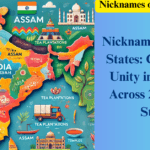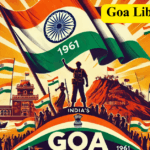
Table of Contents
Goa’s Tourism Crisis: How ‘Delhiisation’ is Dimming Its Bright Future – A 30% Decline in Visitors
Goa’s tourism crisis: How ‘Delhiisation’ is dimming its bright future
Goa’s Tourism Crisis: Goa, once regarded as the crown jewel of India’s tourism, has been facing an increasing crisis as the state’s identity and charm are slowly eroding under the weight of growing urbanization. Often described as undergoing a process of ‘Delhiisation,’ this transformation has brought about a drastic shift in the state’s landscape and its tourism sector, which forms a major part of its economy.
Understanding ‘Delhiisation’ in Goa
‘Delhiisation’ refers to the rapid commercialization, urbanization, and industrialization of Goa, making it more like India’s bustling capital, Delhi, rather than the laid-back beach destination it was once celebrated for. What was once an idyllic escape, with serene beaches and a quaint lifestyle, has been replaced with high-rise hotels, shopping malls, and overcrowded streets.
This phenomenon is primarily driven by an influx of real estate development, urban sprawl, and a sharp rise in mass tourism—elements that have historically been associated with larger cities. The shift has not only affected the environment but also the soul of Goa, pushing away those who once flocked to its shores for a peaceful retreat.
The Tourism Crisis: A 30% Drop in Visitors
Recent statistics reveal that Goa’s tourism sector has seen a worrying 30% decline in the number of visitors, both domestic and international. While many regions in India have seen a surge in tourism following the pandemic, Goa’s numbers have not bounced back as expected. According to tourism stakeholders, this decline is attributed to multiple factors stemming from the growing ‘Delhiisation’ of the region.
“4 Harsh Truths About Goa’s Tourism Decline and the Road to Redemption”
This crisis can be traced to a variety of reasons:

- Over-commercialization and Expensive Travel Options: The rise in high-end luxury resorts, coupled with skyrocketing prices, has made Goa unaffordable for budget-conscious travelers. The unique appeal of Goa’s laid-back beach vibe has been replaced with mass tourism targeting the elite, which has alienated the middle-class demographic that once formed the backbone of the state’s tourism.
- Environmental Impact and Infrastructure Strain: Goa’s environment has been severely impacted by the rapid growth in construction. Once-pristine beaches are now crowded with hotels, shacks, and water sports activities that have deteriorated the natural beauty. Local protests against rampant deforestation and unsustainable development have grown louder, but the state’s focus on expansion continues.
- Increased Congestion and Pollution: The state’s once-picturesque towns have become increasingly congested. Traffic jams, overcrowded public spaces, and noise pollution have driven away tourists who sought a peaceful and relaxed holiday destination.
- Loss of Local Culture: Traditional Goan culture, which once set the region apart, is being overshadowed by external influences. The local way of life is giving way to an influx of urbanized habits, and many believe that the heart and soul of Goa are being replaced with a more commercial, metropolitan culture akin to Delhi.
Looking for Solutions
The ongoing crisis has raised a significant question: can Goa’s tourism sector be salvaged, or is it already too late? Experts suggest that reclaiming Goa’s tourism identity requires a multi-pronged approach that balances growth with environmental sustainability and cultural preservation.
- Revamping Tourism to Focus on Sustainability: Local stakeholders emphasize that Goa needs to focus on sustainable tourism. This includes limiting the construction of large hotels and promoting eco-friendly tourism practices, such as responsible beach resorts, water sports activities that don’t damage marine life, and conserving the local biodiversity.
- Preserving Goa’s Identity: Efforts to promote local culture, including Goan festivals, traditions, and food, can help revitalize the state’s tourism appeal. Creating experiences that are unique to Goa—such as heritage walks and traditional Goan cooking workshops—can attract tourists who want to experience the authentic essence of the state.
- Affordable Options for Domestic Tourists: Introducing affordable accommodations, local transport options, and value-for-money tourism packages is critical in attracting the middle-class families that once flocked to Goa. This could help strike a balance between high-end tourism and more accessible vacation options.
- Engaging with Local Communities: The involvement of local communities in tourism development is crucial. Ensuring that the benefits of tourism are distributed equitably and that the locals are engaged in promoting and preserving the region’s culture and environment will help maintain the authenticity of Goa.
Conclusion
Goa’s tourism industry, which once thrived due to its natural beauty, culture, and relaxed atmosphere, is at a critical juncture. The ongoing ‘Delhiisation’ process is diminishing the state’s appeal to its traditional demographic, leading to a noticeable decline in visitor numbers. However, with a shift in policy that emphasizes sustainable development, preservation of local culture, and environmental protection, Goa has the potential to restore its tourism charm while embracing modernization in a balanced way. If Goa can reinvent itself without losing its soul, it may once again become the vibrant and attractive destination that it once was for millions of tourists worldwide.
See Also This : https://networkbharat.com/10-best-hill-stations-in-india/


